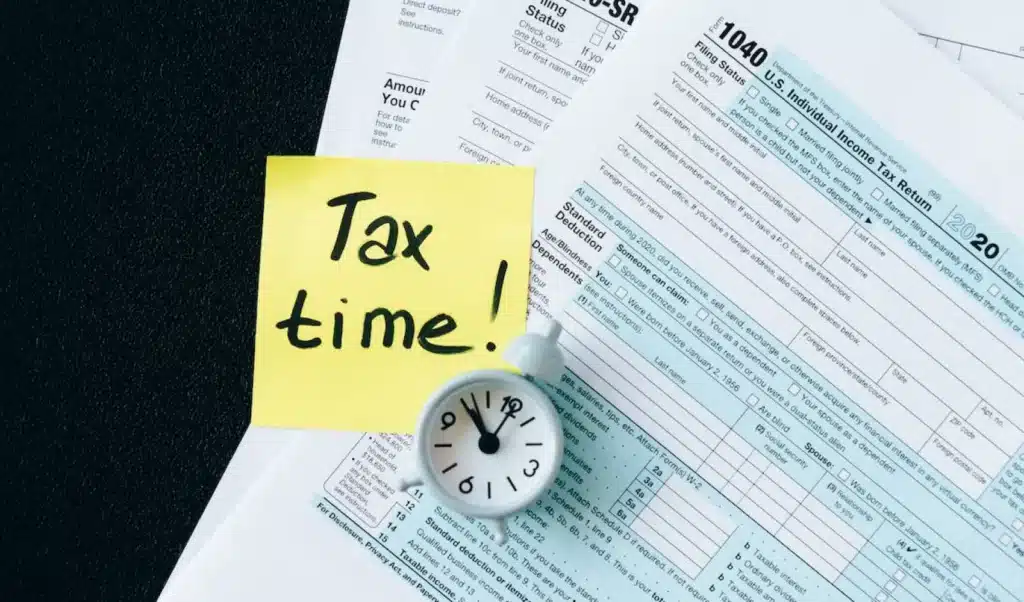Introduction: What is Backup Withholding?
Backup withholding is a tax-related mechanism implemented by the Internal Revenue Service (IRS) to ensure the proper collection of federal income tax. Essentially, it serves as a safeguard to collect taxes when there is uncertainty or incorrectness regarding the taxpayer’s identification number, such as their social security number, or exemption status.
The IRS notifies taxpayers when backup withholding is applied, and income tax is withheld from certain types of income, like interest or dividend payments, as a result. Taxpayers may be requested to provide their taxpayer identification number and certification to avoid backup withholding in these cases. This process is crucial to maintain tax compliance and prevent tax evasion and underreporting of income.
Why Does Backup Withholding Exist?
Understanding why backup withholding exists is essential to grasp its significance. The IRS mandates backup withholding to meet specific requirements related to reportable income, as indicated on Form 1099.
In cases where there is uncertainty or inaccuracy concerning the taxpayer’s identification, such as their social security number (SSN), backup withholding is applied, and income tax is withheld from reportable sources like interests and dividends. This measure ensures accurate tax reporting and collection, helping to maintain tax compliance.
IRS Requirements:
The IRS requires backup withholding when there are discrepancies or issues related to requests for taxpayer identification numbers (TINs). When individuals or entities do not provide valid TINs or fail to certify their exempt status, backup withholding comes into play.
Preventing Tax Evasion:
Backup withholding serves as a deterrent against tax evasion. Backup withholding serves as an effective deterrent against tax evasion. This mechanism ensures that individuals and businesses who fail to report or under-report their income face consequences. When a taxpayer provides incorrect or missing information, the payer, such as an employer or a financial institution, is required to withhold a certain percentage of the payment. The withheld amount is then submitted to the tax authorities as a prepayment towards the taxpayer’s eventual tax liability.
By implementing backup withholding, tax authorities can effectively track and identify potential tax cheats. This system creates a disincentive for individuals to purposely misrepresent their income or engage in fraudulent practices to evade taxes. Additionally, it helps ensure that the correct amount of tax is collected, as the withheld funds are later reconciled with the taxpayer’s tax return.

Who is Subject to Backup Withholding?
Backup withholding can apply to various entities and individuals. Understanding who falls under its purview is crucial:
Individuals:
- Identifying Individuals Subject to Backup Withholding: Individuals who do not provide a valid TIN, furnish an incorrect TIN, or fail to certify their exempt status can be subject to backup withholding.
- Impact on Personal Finances: Backup withholding can affect individuals’ cash flow, making it essential to address and rectify any withholding issues promptly.
Businesses:
- Business Entities and Backup Withholding: Businesses, including corporations and partnerships, must navigate backup withholding compliance.
- Compliance for Corporations and Partnerships: Understanding the specific compliance requirements for different business structures is crucial to avoid complications.
Foreign Entities:
- International Implications: Backup withholding can have international implications, especially when dealing with foreign entities.
- Reporting Requirements for Foreign Account Holders: Compliance requirements for U.S. financial institutions and tax treaties play a significant role in foreign entities’ backup withholding obligations.
When Does Backup Withholding Apply?
Backup withholding applies in specific scenarios and based on established thresholds and limits:
Specific Scenarios:
- Non-Profit Organizations: Backup withholding may apply to payments made to non-profit organizations under certain circumstances.
- Real Estate Transactions: Real estate transactions, such as the sale of a property, can trigger backup withholding.
Thresholds and Limits:
- Minimum Thresholds for Reporting: Understanding the minimum threshold for reporting is essential to determine when backup withholding comes into play.
- Situations Triggering Backup Withholding: Certain situations, such as missing or incorrect TINs, can lead to backup withholding.

Understanding the Backup Withholding Rate
The backup withholding rate is a crucial aspect of this taxation mechanism. It varies based on different factors:
Standard Rate:
- Calculating the Standard Backup Withholding Rate: The standard rate determines the percentage of income that will be withheld as backup withholding.
- Variations Based on Income: Backup withholding rates can vary depending on the recipient’s income level and filing status.
Special Cases:
- Reduced Backup Withholding Rates: Some individuals may qualify for reduced backup withholding rates, reducing their withholding obligations.
- Exemptions and Special Considerations: Certain exemptions and special considerations can impact the backup withholding rate.
6. How to Avoid Backup Withholding
Avoiding backup withholding is a goal for most taxpayers. Here are strategies to ensure you stay clear of backup withholding:
Providing Accurate Information:
- Importance of Correct TIN: Providing an accurate Taxpayer Identification Number (TIN), such as your social security number, is the first step in avoiding backup withholding.
- Update Requirements: Keeping your TIN information up to date is crucial to prevent withholding issues.
Updating Records:
- Keeping Records Current: Regularly updating your records ensures that you provide accurate information to payers.
- Notifying Payers of Changes: When changes occur, notifying payers promptly helps prevent backup withholding. This is particularly important for independent contractors, individuals expecting a tax refund, and those receiving dividend income, as these transactions often involve information returns that could trigger backup withholding if the information is inaccurate.
The Process of Backup Withholding
Understanding the process of backup withholding is essential for both payers and recipients:
Notification:
- Receiving Backup Withholding Notices: Payees may receive notices indicating that they are subject to backup withholding.
- Responding to IRS Notices: Addressing IRS notices related to backup withholding is essential to resolve any disputes or issues.
Withholding and Reporting:
- Mechanics of Withholding: Understanding how withholding works and what payers must do is crucial for compliance.
- Reporting Backup Withholding on Tax Forms: Both payers and recipients have responsibilities when it comes to reporting backup withholding on tax forms.

Consequences of Backup Withholding
Backup withholding can have significant financial implications for individuals and businesses:
Impact on Cash Flow:
- Financial Implications for Payees: Backup withholding can affect cash flow, making it essential to manage these withheld funds effectively.
- Managing Cash Flow with Backup Withholding: Strategies for handling backup withholding and ensuring it doesn’t disrupt your finances.
Tax Return Complications:
- Reporting Backup Withholding on Tax Returns: Accurately reporting backup withholding on tax returns is crucial to prevent penalties.
- Tax Deductions and Credits: Backup withholding can impact tax deductions and credits, necessitating careful consideration during tax filing.
Exempt From Backup Withholding
Exempt From Backup Withholding refers to certain types of income that are not subject to backup withholding. Backup withholding is a requirement for certain payments made to taxpayers who have failed to provide a correct taxpayer identification number (TIN) to the payer. However, there are certain situations where backup withholding does not apply.
- Payments made to tax-exempt organizations, government agencies, and certain foreign entities are exempt.
- If an individual makes a certification, under penalties of perjury, that they are not subject to backup withholding due to exempt status and the payee amount does not exceed a specified threshold, backup withholding also does not apply.
- Income derived from certain financial transactions, such as the sale of a principal residence or certain retirement plans, is generally exempt from backup withholding.
It is important for taxpayers to understand the situations and criteria for exemption from backup withholding in order to ensure proper reporting and compliance with tax regulations.
IRS Form and Withholding Rules
The IRS form and withholding rules are important aspects of the US tax system. The IRS form is a document that individuals and businesses must complete and submit to report their income and claim deductions, credits, and exemptions. It is used to determine the amount of tax that the taxpayer owes or the refund they are entitled to. There are various types of IRS forms, such as the 1040, 1040A, and 1040EZ, each catering to different types of taxpayers and their specific circumstances.
- Stay Informed About IRS Updates: Keeping up-to-date with IRS regulations and changes is crucial for compliance.
- Implications of Regulatory Changes: Understanding how regulatory changes can impact your backup withholding obligations.
- Form 945: IRS Form 945 is essential for reporting federal income tax withheld. It helps ensure compliance and accurate reporting.
- Stop Backup Withholding: If you’ve been subject to backup withholding, taking the necessary steps can help you stop it. Updating your information, such as providing a correct legal name on Form W-9, is crucial.
- May Be Subject to Backup: If your financial transactions involve reportable interest, dividends on your tax return, or income from a brokerage account, you may be subject to backup withholding if your information is inaccurate.
- Form W-9: Completing Form W-9 is often necessary, and doing so within the required 120 days can help avoid backup withholding.
- State Tax: While backup withholding primarily relates to federal income tax, it’s important to consider state tax implications as well to ensure full compliance with tax regulations.

Conclusion
In conclusion, backup withholding is a critical component of tax compliance that individuals and businesses must understand and navigate effectively. By comprehending its intricacies, providing accurate information, staying informed about changes, and taking proactive measures, you can ensure smooth financial transactions and minimize potential disruptions caused by backup withholding.
Whether you have questions about your backup withholding status, need assistance with compliance, or seek guidance on any tax-related matters we are here to assist you. Our experts are committed to helping you navigate the complexities of tax compliance, ensuring your peace of mind in the ever-evolving world of taxation.
FAQs About Backup Withholding
Frequently asked questions can shed light on common concerns related to backup withholding:
1: What is the minimum threshold for backup withholding?
- The minimum threshold for backup withholding is $600 in a calendar year.
2: How do I know if I am subject to backup withholding?
- You may be subject to backup withholding if you provide an incorrect taxpayer identification number (TIN) or fail to report interest and dividend income.
3: Can backup withholding be appealed?
- Backup withholding can be appealed by resolving the issues that led to it, such as updating your TIN or tax compliance.
4: How often does the IRS update backup withholding rates?
- The IRS updates backup withholding rates periodically, typically as tax laws change, and it’s essential to stay informed.
5: What are the consequences of failing to report backup withholding on my tax return?
- Failing to report backup withholding on your tax return can result in penalties and additional tax owed to the IRS.










